
$109.00
Area 52
Area 52 Delta 8 THC Tinctures 30 mL
| Total Delta 8 THC: | 1200 mg |
| Delta 8 THC Potency: | 40 mg/mL |
| Cost per mg Delta 8 THC: | $0.09 |
| Delta 8 Source: | Hemp (<0.3% D9 THC) |

Delta 8 THC is a minor cannabinoid with similar effects as delta 9 THC — only milder, smoother, and with less anxious side effects.
The active ingredient in marijuana is THC. It’s the compound responsible for producing the characteristic high the plant is known for.
Most people don’t know that there are actually two different types of THC — delta 8 and delta 9 THC.
The difference between these two molecules is subtle, but it has a big impact on the overall effects. Delta 8 THC is revered for producing similar psychoactive effects as delta 9 THC — minus some of the negatives like anxiety or paranoia.
Here, you’ll learn everything you need to know about delta 8 THC.
We cover how to use it, where to buy it, and what to expect after taking it.
Delta 8 THC (delta-8-tetrahydrocannabinol) is an analog of delta 9 THC — which means they have the same structure, with one slight difference.
Both molecules are virtually identical aside from the location of a double bond in the chemical structure. That’s it.
The delta 9 isomer has this bond at the 9th carbon chain, while the delta 8 isomer has this double bond at the 8th carbon chain. The difference is minimal, but it ends up having a noticeable difference in terms of effect profile.
The difference is also enough that these two compounds are classified differently from a legal perspective as well — at least, that’s the theory. The laws regarding delta 8 THC are confusing, and there’s a lot of room for interpretation (more on this later).
Many companies that make delta 8 THC are selling it as a “legal high” — as an alternative to delta 9 THC. Delta 8 is also smoother and less likely to lead to anxiety than delta 9.
It’s great for people who enjoy the effects of THC but find it makes them “too anxious”.
Delta 8 THC also has a longer shelf-life than delta 9 THC. Over time, some of the delta 9 THC is converted to delta 8 THC, while the rest breaks down into another cannabinoid called CBN (cannabinol).
CBN is non-psychoactive. The THC that’s been converted to delta 8 THC will remain active much longer before eventually degrading into CBN.
In terms of potency, delta 8 THC is roughly half as potent as delta 9 THC.
There are other THC-derivatives as well, including delta 7 THC, delta 10 THC, THCP, HHC, and THCV. Some synthetic cannabinoids like THC-O have also seen a dramatic uptick in interest lately.
We expect to see these cannabinoids enter the mainstream cannabis industry within the next 3–5 years.
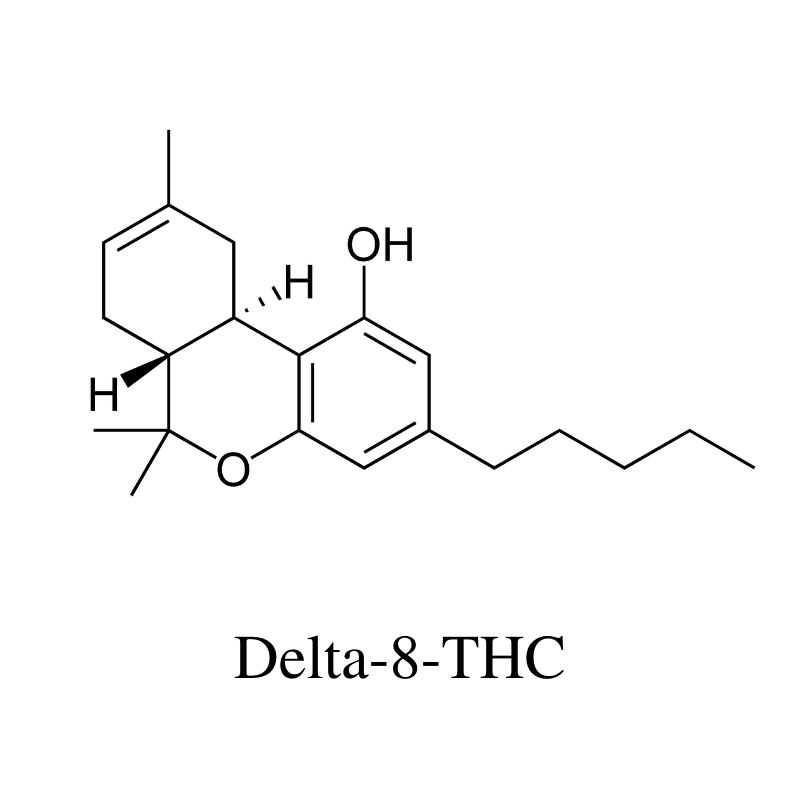
The effects of delta 8 are very similar to delta 9, but with some subtle differences. Delta 8 is much more soothing, relaxing, and mellow. It’s only about 50 percent as strong as delta 9, which makes it easier to use the right dose without going overboard.
The best way to describe how this cannabinoid makes you feel is chill.
The downside of this compound is that it also has a higher affinity for causing the munchies, and can make you feel a bit sleepy in higher doses (which may be a benefit depending on what you’re using it for).
There are a few hemp flower strains that contain higher than average delta 8 THC — but only marginally.
It’s difficult for plant breeders to selectively breed cannabis strains with a higher delta 8 THC content because there are no specific enzymes that make this cannabinoid. There’s no way to select for plants that naturally make delta 8 THC.
All the delta 8 THC in cannabis comes as a byproduct of delta 9 THC production.
Cannabis flowers that have been stored for long periods of time tend to have a higher concentration of delta 8 THC than fresh plant material.
Instead of selective breeding, delta 8 THC flower is made by “aging” regular marijuana flower. This involves harvesting the flower and storing it under conditions that are most conducive to degrading delta 9 THC to delta 8 THC (exposure to UV light and oxygen).
Another method some companies are using is chemical conversion. Marijuana extracts can be processed in a way that converts a large percentage of the delta 9 THC into delta 8 THC.
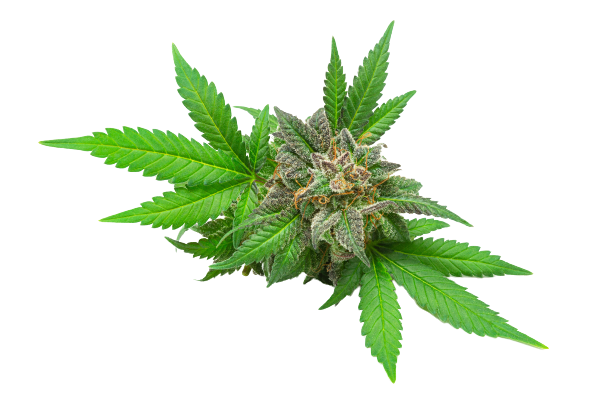
It takes roughly twice as much delta 8 THC compared to delta 9 THC to produce the same effects.
The standard dose of delta 9 THC is 5 to 20 mg — but some people use much more.
Therefore, the standard dose for delta 8 THC is around 10 to 40 mg per dose. Psychoactive effects can occur at doses as low as 5 mg in sensitive people.
The optimal dose of delta 8 THC depends on a few factors:
The dose of delta 8 THC is around 0.14 mg/kg for a light dose and up to 0.50 mg/kg for a heavy dose. That works out to around 0.6 mg/10 pounds of body weight, or 2.5 mg/10 lbs, respectively.
| Your Weight | Mild Effects | Heavy Effects |
| 80 lbs (35 kg) | 5 mg | 15 mg |
| 100 lbs (45 kg) | 6.3 mg | 20 mg |
| 120 lbs (55 kg) | 7.7 mg | 27 mg |
| 140 lbs (65 kg) | 9 mg | 32 mg |
| 160 lbs (72 kg) | 10 mg | 36 mg |
| 180 lbs (82 kg) | 12 mg | 40 mg |
| 200 lbs (90 kg) | 13 mg | 45 mg |
| 220 lbs (100 kg) | 14 mg | 50 mg |
| 240 lbs (108 kg) | 15 mg | 54 mg |
| 260 lbs (118 kg) | 17 mg | 60 mg |
Tolerance occurs when the body resists the effects of a substance. When we take compounds like THC, it changes the activity of certain receptors (in this case, the CB1 receptors). When we use these compounds frequently, the body changes the receptors to reduce the substance’s impact.
This happens for all different kinds of compounds, not just THC.
Tolerance forms to delta 8 THC faster than it does with delta 9 THC. This means the effects start to become weaker the more often you use it.
You’ll need a higher dose to get the same benefit if you use THC often.
The flip side to this is that you also tend to lose this tolerance faster when you stop using it. If you find delta 8 THC isn’t working as well as it used to, it’s worth taking a break for 1 – 2 weeks. By the end of the second week, delta 8 THC will be back at its maximum strength again.
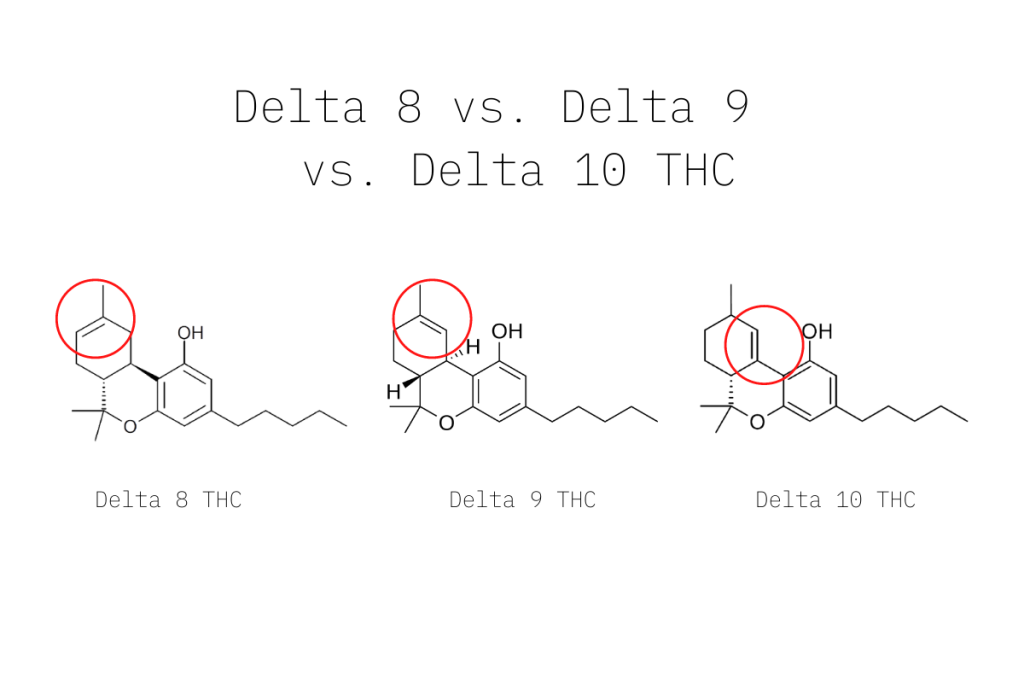
In general, you can expect the same benefits and effect profile from delta 8 THC as delta 9 THC. Both produce the same perceptual differences, stimulate appetite, and offer the same health benefits.
The differences between these two compounds are subtle — so the best way to compare the two is with a side-by-side comparison:
| Metrics | Delta 8 THC | Delta 9 THC |
| Psychoactivity | Mild-Moderate | Moderate-High |
| Cost | $$$ | $ |
| Concentration in Hemp | Less than 1% | Up to 30% |
| Receptors | CB1 & CB2 | CB1 & CB2 |
| Typical Dose | 10–40 mg | 5 – 20 mg |
| Effects on Appetite | Strong Stimulant | Moderate Stimulant |
| Anxiety Side Effects | Very Mild | Mild to Moderate |
| Legality | Legal-Grey Area | Illegal |
Delta 8 THC is used the same way as any other cannabinoid. You can smoke it, vape it, use it as a tincture, take capsules, or use the raw flower buds.
The main difference with delta 8 THC is that it’s not that common. There are hundreds of companies making THC products that contain delta 9 THC, but only a few companies are making delta 8 THC products.
The low concentrations of delta 8 THC in cannabis plants also mean that to get strong delta 8 THC products, they need to be made from a concentrate.
Most delta 8 THC products aren’t entirely pure — they also contain other cannabinoids, such as CBD or CBN, as well as delta 9 THC.
Here are the most common forms you’ll find delta 8 THC on the market today:
A distillate is made by isolating certain groups of compounds together based on their chemical structure.
Companies can extract and concentrate the THC content through distillation techniques. This process is efficient at isolating THC as a whole but isn’t effective at separating delta 8 THC from delta 9 THC.
Instead of separating the two, distillates are then put through a chemical process to convert as much of the delta 9 THC into delta 8 THC as possible.
This usually yields a final product with around 45–65% delta 8 THC, along with up to 10% delta 9 THC and 1–5% CBD. Other cannabinoids may also be present in concentrations less than 1%.
Learn more about delta 8 THC distillates.
Distillate comes as a thick paste. It can be clear or light brown in color.
To use a distillate, you can smoke the resin in a dab rig, add it to a vaporizer, or eat it.
The most common way to use delta 8 THC distillate is via a dab rig or vaporizer.

| Total Delta 8 THC: | 1200 mg |
| Delta 8 THC Potency: | 40 mg/mL |
| Cost per mg Delta 8 THC: | $0.09 |
| Delta 8 Source: | Hemp (<0.3% D9 THC) |
Delta 8 THC tinctures or oils are another common method of using delta 8 THC. These products are made by infusing a carrier oil (such as MCT oil or hemp seed oil) with concentrated distillate.
Tinctures have a long shelf life, allow for simple and accurate dosing, and offer long-lasting effects.
Just like CBD oils, you can find delta 8 THC tinctures in all different potencies. The most common potency is about 300 mg per ounce — which works out to around 10 mg of delta 8 THC per milliliter. For a standard 20 mg dose, you’ll need about 60 drops — or two full droppers.
These products are used the same way as CBD oil. Place a few drops into your mouth directly, or add them to a glass of water and drink. You can get an even faster onset of effects by holding the oil under your tongue for a few moments before you swallow. This allows the active ingredients to absorb through the tiny blood vessels underneath your tongue — directly into the bloodstream.
Make sure you’re familiar with the dose of the tincture you’re using. The optimal dose can vary depending on how strong the oil is.
Warning: delta 8 THC tinctures usually contain some THC and may not be legal where you live.

| Total Delta 8 THC: | 750 mg |
| Delta 8 THC Potency: | 25 mg Per Gummy |
| Cost per mg Delta 8 THC: | $0.07 |
| Delta 8 Source: | Hemp (<0.3% D9 THC) |
Delta 8 THC is also commonly made into gummy candies. This is a great way to get started using delta 8 THC if you’re new because it makes dosing very simple. Each gummy candy contains a set amount of active ingredients — usually around 5 or 10 mg per piece.
Learn more about delta 8 THC gummies.

| Total Delta 8 THC: | 500–1000 mg |
| Cost per mg Delta 8 THC: | $0.04–$0.05 |
| Delta 8 Source: | Hemp (<0.3% D9 THC) |
You can buy pre-made disposable delta 8 THC vape pens or cartridges to use with your reusable pen.
Some companies are starting to make premade vape cartridges for common vape models these days as well. At the moment, there are no delta 8 THC Juul pods, but you can get it in the standard 8 mm threaded vape cartridges — which is the universal thread for electronic vaporizer cartridges.
To use the vape, turn it on and take a deep breath. The longer you hold the vapor in your lungs, the more that absorbs into your bloodstream.
If you’re vaping for the first time, it’s important to be patient. Take one puff and wait a few minutes before you go in for another one. It can take up to 10 minutes for a puff to start taking effect.
Repeat the process until you get the desired level of effects.
This is important for the first time to help prevent using too much. Many people who aren’t familiar with how delta 8 THC feels will take several puffs before realizing they’ve had too much. At this point, there’s no going back. There is no way to undo the effects of THC.
Delta 8 THC is much milder than delta 9 THC and tends to have fewer side effects, so it’s less common to take too much delta 8.
With that said, it’s still possible, so tread softly when trying it out for the first time.
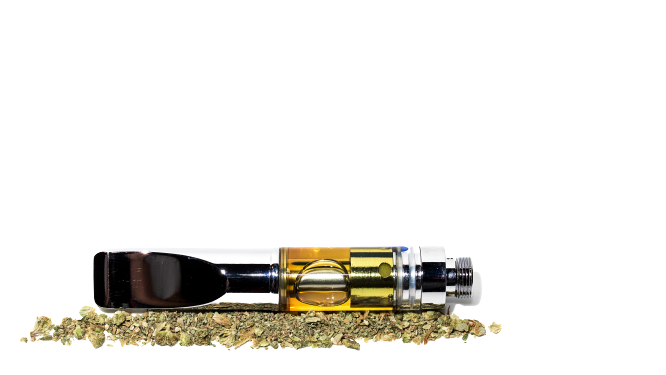
This is the big question surrounding the legality of delta 8 THC. No matter where you look, you’ll get a different opinion about the legal status of delta 8 THC. Currently, this cannabinoid lives in a bit of a legal loophole.
The reason for this is that the laws regarding THC are contradictory. Marijuana is still listed as a Schedule I drug in the United States — which makes it highly illegal. Several states have created their own laws around the use of marijuana, but it remains illegal federally. This includes any products manufactured from marijuana, including delta 8 THC products.
Hemp, on the other hand, is legal across all 50 states. Hemp is differentiated from marijuana by its THC content — specifically the delta 9 THC content.
The 2018 Farm Bill — which is the bill that moved hemp from schedule I to non-scheduled status, only mentions delta 9 THC, not delta 8 THC. So many interpret this law to mean that any delta 8 THC products made from hemp are legal in the United States.
Since delta 8 THC is psychoactive, some believe the DEA (Drug Enforcement Administration) may still crack down on products containing this compound even though it isn’t specifically mentioned as a controlled substance.
What all this means is that delta 8 THC is currently caught in a bit of a “legal grey area” It could be interpreted as being illegal — but it can also be interpreted as legal.
Some states have their own laws surrounding delta 8 THC that specifically ban it. A few examples include Alaska, Arizona, Arkansas, Colorado, Delaware, Idaho, Iowa, Montana, Pennsylvania, and Utah.
Related: Delta 8 THC Do Not Buy List.
Delta 8 THC has only recently hit the radar of mainstream medical research. Prior to this, delta 8 was of very low importance to research. Aside from a few preliminary studies exploring its structure in more detail or using large assays to screen for the effects of different cannabinoids, there hasn’t been much focused research.
Over the last few years, this has started to change. There are now several large-scale studies that have been published on the effects of delta 8 THC.
Popularity is also rising in the public sphere, and people are seeking out products that are particularly high in this cannabinoid. As a result, the pool of anecdotal (user) reports is growing at a steady pace.
Delta 8 THC has shown a lot of promise as an alternative to THC and a potential therapeutic compound for a variety of medical conditions. Just like THC, its primary action is on the endocannabinoid system (ECS).
Here’s what the research says so far.
There are many anecdotal reports of people using delta 8 THC who claim the high from this cannabinoid is similar to THC but allows for a much more clear-headed focus. Delta 9 THC is notorious for causing anxiety, which can interfere with focus.
A preclinical study published in 2018 found that topical administration of delta 8 THC produced significant improvements in pain and inflammation associated with eye injuries [1]. This benefit was shown to work primarily through the activation of the CB1 endocannabinoid receptors.
An older study (1995) gave patients undergoing cancer therapy, a dose of delta 8 THC 2 hours before each treatment and continued every 6 hours afterward for a total of 24 hours [2]. This study reported complete prevention of nausea symptoms without any major side effects.
Both delta 8 and delta 9 THC are considered potent appetite-stimulants. However, delta 8 THC is considered the stronger of the two — increasing the feeding patterns of mice in one study by 22% [3].
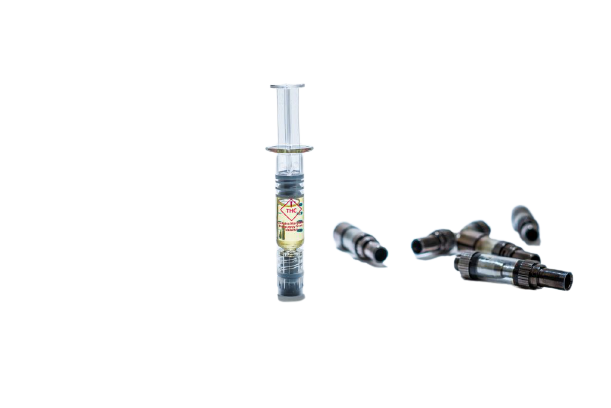
Delta 8 THC products can be made relatively cheaply from hemp plants — which makes them legal under federal law.
The problem is that hemp doesn’t have very much of this cannabinoid, so companies need to concentrate very large quantities of hemp to get it. Manufacturers need to use fairly harsh chemicals in order to convert CBD (cannabidiol) to delta 8 THC at an efficient rate.
Manufacturers will start with a large batch of hemp flowers, which is then put through an extraction process to remove all the cannabinoids and terpenes.
From here, the extract is put through a process called thin-film distillation, which further separates the ingredients. Each cannabinoid fraction is kept and sold individually. CBD is the most abundant cannabinoid, which is used to make CBD oils, CBD capsules, and more.
CBG (cannabigerol) is another abundant and popular cannabinoid, which is usually sold in the form of a concentrate or tincture.
Throughout the extraction and concentration process, various chemical solvents were mixed in with the extract. These need to be removed before the concentrate is safe to use.
Solvents have a lower evaporation point than cannabinoids. Removing these solvents involves neutralizing the acids, and gently heating the extract to allow solvents to evaporate on their own.
Most companies use a vacuum chamber to remove the solvents without adding any extra heat (which can damage the active ingredients). These chambers work by removing air from inside the chamber to create a vacuum of low pressure.
When the pressure drops, the boiling point is reduced.
For example, the boiling point of water is 100ºC (212ºF). However, in a vacuum chamber with the pressure set to 700 mmHg below atmospheric pressure, the water will start to boil at 40ºC (104ºF).
This process allows the manufacturer to evaporate all the solvents from the extract without adding any additional heat. Heat can damage the delta 8 THC and cause it to degrade into the non-psychoactive CBN.
Because of the distillation processes needed to make delta 8 THC, most companies don’t sell full-spectrum extracts. Some companies will combine D8 with other cannabinoids like CBG, CBC, CBN, or CBD.
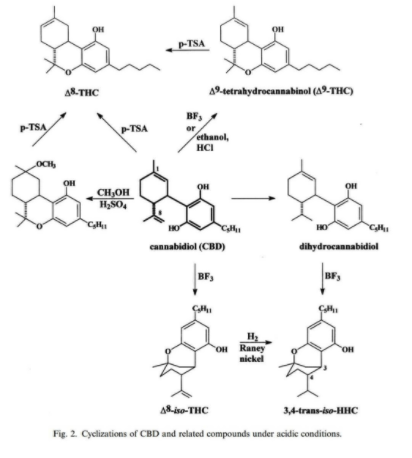
Delta 8 THC is very similar to regular THC (delta 9 THC). The effects are virtually identical, with a few exceptions. Delta 8 THC is about half as strong, produces less anxious side-effects, and has stronger appetite stimulant effects.
The only difference between delta 8 THC and delta 9 THC from a structural perspective is the location of a double bond in the chemical structure. Delta 8 has the double bond on the eight carbon chain; delta 9 has this bond on the ninth carbon chain. Other than that, there’s no difference between the two.
Delta 8 THC is often sold as a legal high in the United States, the UK, and other parts of Europe. It can be made from hemp plants, which are considered legal under most federal jurisdictions.
However, the laws regarding delta 8 THC and related cannabis products are vague, and it’s unclear whether regulators will crack down on this psychoactive cannabinoid or not.